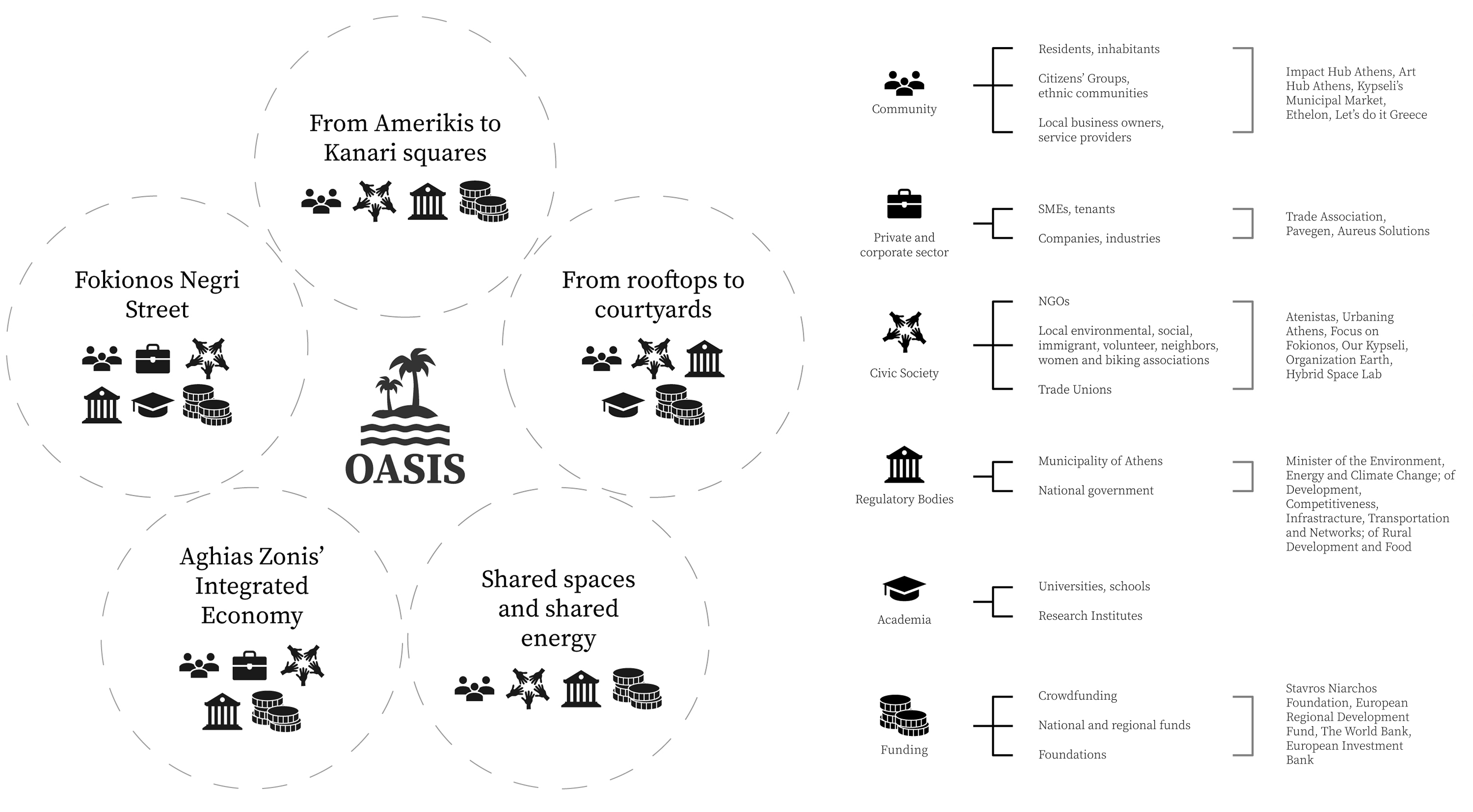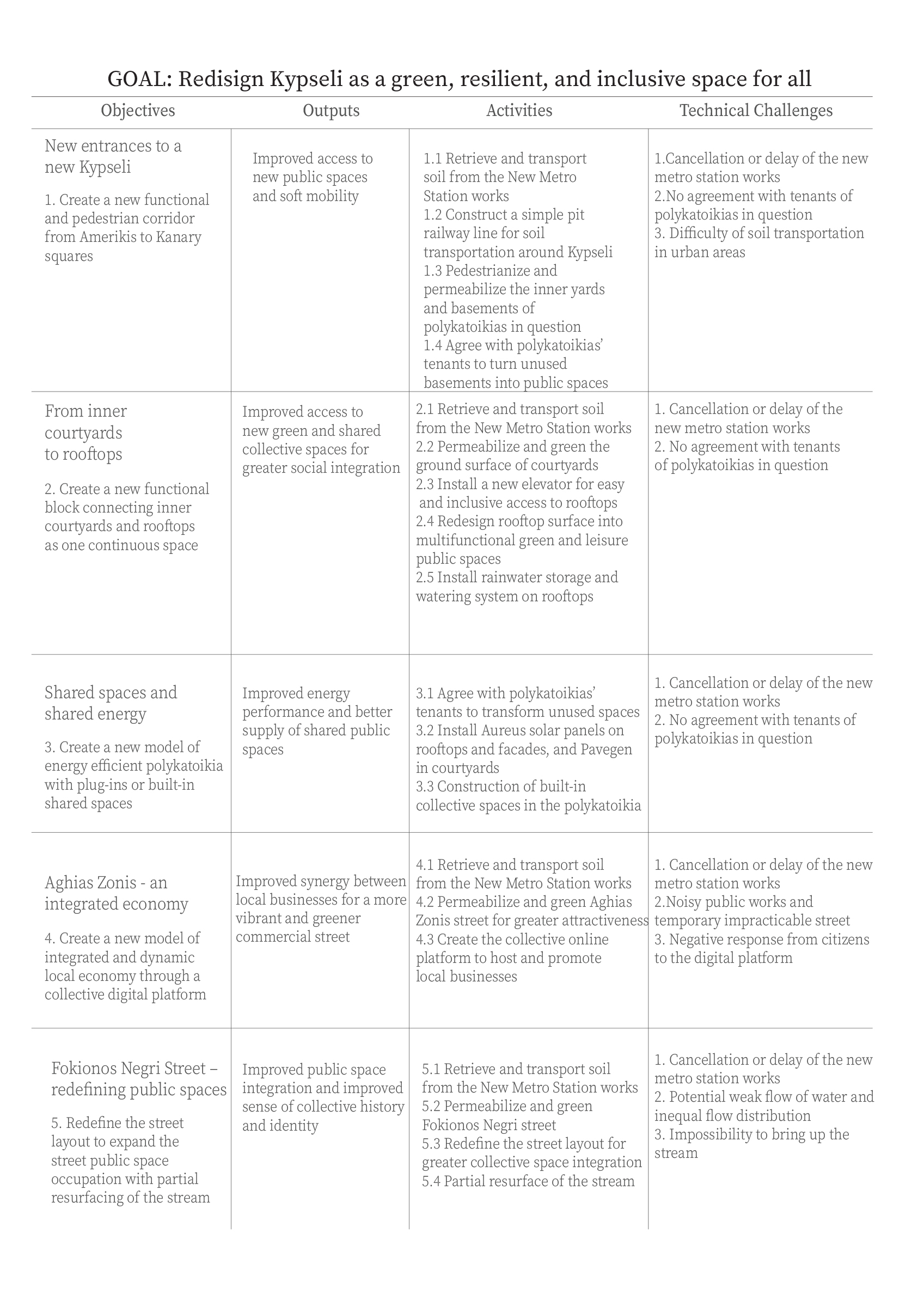Evaluation of the community
The positive impact of this proposal on the well-being of the community of Kypseli and the way it improves the population's quality of life is one of the basic pillars of the project.

Priority is given to the identification and involvement of key stakeholders. Figure 1 shows the distribution of stakeholders across the different areas of interventions to further be able to build synergies among these groups. Figure 2 highlights their weight and decision-making power for the implementation phase of the project. Key stakeholders are placed on a grid, based on two variables: power and interest. Their positions show the degree to which they could influence, affect, or be interested in the project.

Populations’ involvement is crucial to ensure a more adapted, inclusive and mindful project that leaves no one behind and reflects and meets the needs and desires of the entire population. This engagement will also ensure the resilience and capacity of adaptation of the project. Co-design and consulting are essential to empower the community by giving it a chance to participate in the local urban politics. We believe in the key role of associations. To enable comprehensive citizens’ engagement, we propose extensive collaboration and feedback consultations during the entire conception and implementation process.

Implementation plan
Our implementation plan was inspired by the logical framework approach (ASF, 2021) which defines the life cycle of a project and its planification steps. Following this framework, our action plan covered the identification step, which consists of the analysis of the context, problems, and stakeholders, as presented through the design concept, the environmental assessment, and the evaluation of community benefit. This implementation plan thus focuses on the preparation step, which consists of the project timeframe and phasing, technical challenges, and the budget.

Our project is in compliance with planning rules, as it does not directly tackle street width or pavement enlargements, but focuses on accessibility and mobility for all, enabling for example an easy access to pilot polykatoikias’ rooftops via lift and ramps. Our OASIS project combines public-private investment involving all stakeholders who want to play a role in the development of Kypseli and Athens on local, regional, and national scales. Among potential investors, the Recovery and Resilience Facility Fund is deemed as key to kickstart the project.


Other financing institutions include other foundations such as Limmat Stiftung, Stavros Niarchos Foundation, banks such as the European Investment Bank and the government, with the Municipality of Athens, through the Ministries of the Environment, Energy and Climate Change; of Development, Competitiveness, Infrastructure, Transportation and Networks; and of Rural Development and Food. Finally, it is completed by local community groups through crowdfunding and volunteer work. With this system, the OASIS project comes out as cost-effective, with a strong focus on the circular economy model.
